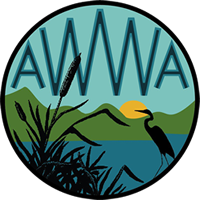Point Source and Nonpoint Source Pollution are the two broad categories of pollution in watersheds. Lets start with point source pollution.
Point Source Pollution can be identified as pollution from a specific spot. A drain pipe leading out of a building and discharging waste into a waterbody is an example of point source pollution.
 Point source pollution was realized as a major problem in the late 1960s when the Cuyahoga River in Ohio caught fire from being so polluted. This prompted the passing of the Clean Water Act in 1972 and the regulation of point source pollution.
Point source pollution was realized as a major problem in the late 1960s when the Cuyahoga River in Ohio caught fire from being so polluted. This prompted the passing of the Clean Water Act in 1972 and the regulation of point source pollution.
The EPA term “point source” means any discernible, confined and discrete conveyance, including but not limited to any pipe, ditch, channel, tunnel, conduit, well, discrete fissure, container, rolling stock, concentrated animal feeding operation, or vessel or other floating craft, from which pollutants are or may be discharged. This term does not include agricultural storm water discharges and return flows from irrigated agriculture.
Non-point Source (NPS) Pollution is pollution that cannot be tied to a specific pipe or drain. NPS pollution generally results from land runoff, precipitation, atmospheric deposition, drainage, and/or seepage. Stormwater running off the landscape carries with it soils, nutrients, petrol, trash, pet waste, etc. and is deposited into a waterbody causing water quality degradation.
(photos courtesy of US National Oceanic and Atmospheric Administration (NOAA))

